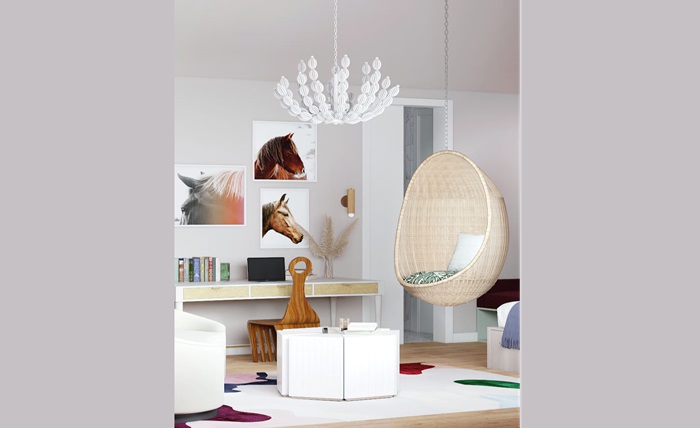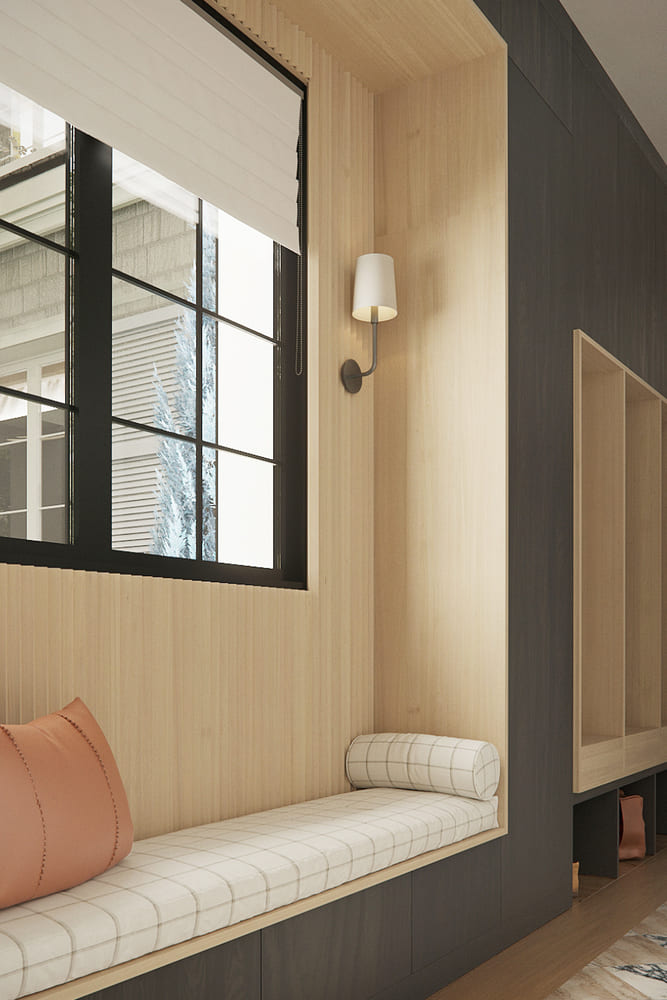Table of Contents
Introduction to the Virtual Revolution
In an age where technology is ceaselessly evolving, the concept of showcasing products and designs has taken a significant leap forward. The advent of 3D virtual showrooms is changing the face of retail, exhibitions, and product demonstrations. This immersive technology is not just a trend; it’s a revolution that redefines consumer experiences, breaks down geographical barriers, and provides innovative solutions to traditional marketing challenges.
The Emergence of 3D Virtual Showrooms
The emergence of 3D virtual showrooms can be traced back to the advancements in virtual reality (VR) and augmented reality (AR) technologies. As these technologies became more sophisticated and accessible, businesses started exploring their potential beyond gaming and entertainment. Pioneering companies in the automotive and furniture industries began experimenting with virtual reality to show products in detailed, three-dimensional space, allowing customers to explore products as they would in the physical world.
The Impact of the Pandemic
The global pandemic accelerated the adoption of virtual solutions across industries. With lockdowns and social distancing norms in place, physical showrooms and stores faced unprecedented challenges. 3D virtual galleries emerged as a beacon of innovation, enabling businesses to continue showcasing their offerings. Companies like IKEA and Audi transitioned into these virtual spaces, allowing customers to browse and interact with products from their homes.
A Closer Look at the Technology
At the heart of these virtual showrooms lies a combination of 3D modeling, real-time rendering, and interactive design elements. Modern software like have made it possible to create realistic 3D environments that users can navigate interactively. These environments are meticulously designed to reflect the brand’s image, from the layout and lighting to the materials used for each product.
User Experience at the Forefront
The success of a 3D virtual showroom hinges on the user experience. It should be intuitive enough for anyone to navigate without confusion, regardless of their tech savvy. Interactive hotspots, clear navigation cues, and responsive design are crucial elements that make a virtual showroom user-friendly. Companies continually refine the interface to ensure the virtual space is as welcoming and easy to explore as a physical showroom.
Real-Time Customization and Personalization
One of the most compelling features of 3D virtual showrooms is the ability to customize products in real-time. Customers can change a product’s colors, textures, and parts and immediately see the results in 3D. This level of interactivity is engaging and helps customers make informed decisions by seeing their choices materialize before their eyes.
The Benefits for Businesses and Customers
The benefits of 3D virtual showrooms extend to both businesses and consumers. Companies can reach a wider audience without needing multiple physical locations, reduce overhead costs associated with maintaining a physical showroom, and gather detailed data on customer preferences and behaviors. For customers, the convenience of exploring products without travel, the excitement of a tailored experience, and the ability to make confident purchasing decisions are just a few advantages.
Sustainability and Global Reach
Sustainability is an increasingly important concern for both consumers and businesses. Virtual showrooms are inherently more sustainable than their physical counterparts; they require no biological materials to build and no energy to heat or cool. Moreover, they allow businesses to reach globally without the carbon footprint associated with traditional international marketing methods.
Diverse Applications Across Industries
While initially popular in the automotive and furniture industries, 3D virtual showrooms are now used by many sectors. Real estate companies offer virtual property tours, allowing potential buyers to walk through homes and customize features on the spot. Art galleries and showrooms are creating virtual spaces to exhibit works, making art and culture accessible to a broader audience.
Integrating with E-Commerce Platforms
Integrating 3D virtual showrooms with e-commerce platforms is critical in creating a seamless shopping experience. Companies like are already offering solutions that allow users to explore products in 3D before making a purchase. This integration helps bridge the gap between online shopping and the brick-and-mortar experience.
Future-Proofing with Advanced Analytics
Advanced analytics are vital in understanding customer interactions within a virtual showroom. Heatmaps, click tracking, and user flow analysis gives businesses insights into how customers explore the virtual space, which products attract the most attention, and where users may encounter issues. This data is invaluable for optimizing the showroom and enhancing the customer experience.
Overcoming Challenges
While the benefits are clear, there are challenges to creating and implementing a successful 3D virtual showroom. High-quality 3D content creation can be resource-intensive, and ensuring compatibility across different devices and platforms can be complex. Furthermore, businesses must balance realism and performance to ensure the virtual showroom is accessible to users with varying internet speeds and hardware capabilities.
Advancements in Visualization and Interactivity
With the fundamentals of 3D virtual showrooms established, we now focus on the technical advancements that have catapulted these platforms to the forefront of digital marketing. Cutting-edge visualization technologies such as ray tracing and photogrammetry have enabled creators to produce environments that are virtually indistinguishable from reality. These techniques, once the purview of high-end film studios, are now being leveraged to create dynamic and hyper-realistic product models and environments for virtual showrooms.
The Role of Augmented Reality
Augmented reality has also begun to play a pivotal role in enhancing 3D virtual showroom experiences. AR applications allow users to use smartphones or tablets to place virtual products in real-world environments. This has massive implications for customer engagement, as it blurs the line between the digital and physical realms, enabling a form of ‘try before you buy’ that was previously unimaginable for online shoppers.
The Social Aspect of Virtual Showrooms
Beyond individual experiences, social interaction within virtual environments is a burgeoning field. Platforms are experimenting with multiplayer features that allow multiple users to visit a showroom simultaneously, offering a shared experience akin to visiting a physical store with friends. This social component could redefine online shopping as a collective and social experience rather than an isolated activity.
Training and Education within Virtual Environments
Education and training represent another area where 3D virtual showrooms shine. Businesses use these spaces to educate customers and employees about products and services. For example, automotive companies can demonstrate the inner workings of a vehicle in ways that would be impossible in the real world, enhancing understanding and engagement.
Case Studies of Successful Virtual Showrooms
Success stories abound in the realm of virtual showrooms. One notable example is the luxury fashion brand Balenciaga, which created a virtual reality collection presentation that garnered widespread media attention and engagement. Another is the virtual trade show platform, fairs, which has hosted many virtual events, proving that even large-scale trade shows can be successfully executed online.
Marketing and Branding Opportunities
The marketing potential of virtual showrooms is immense. Brands can create thematic experiences or timed events within their galleries to coincide with product launches or marketing campaigns. Additionally, the flexibility of the virtual space means that galleries can be updated or wholly transformed with far less effort and expense than physical renovations.
Enhanced Analytics and Consumer Insights
As mentioned, analytics derived from user interactions within virtual showrooms offer deep insights into consumer behavior. But beyond heatmaps and click tracking, AI and machine learning are employed to predict consumer preferences, personalized recommendations, and even forecast market trends based on virtual showroom interactions.
Challenges in Implementation and Accessibility
Despite the optimism surrounding virtual showrooms, there are hurdles to their implementation. User accessibility remains challenging, as those without high-speed internet or the latest hardware may encounter a suboptimal experience. Ensuring these virtual spaces are inclusive and accessible to all potential customers is an ongoing challenge for developers.
Strategies for Seamless Integration
Seamless integration with existing online platforms and sales channels is crucial for businesses incorporating a virtual showroom. This involves technical integration and aligning the virtual showroom experience with the brand’s overall digital presence, ensuring consistency across all customer touchpoints.
Collaboration with Designers and Technologists
Creating a virtual showroom is a collaborative effort often involving a diverse team of designers, technologists, and marketing professionals. The synergy between these disciplines is vital to creating a virtual space that is technically impressive and resonates with the target audience on a conceptual level.
Looking to the Future: Evolution of Virtual Spaces
As we look to the future, the potential evolution of virtual showrooms is limited only by imagination and technology. Innovations in VR and AR, along with advancements in AI, will continue to expand the capabilities and applications of these spaces. Virtual reality could include more sensory experiences, such as touch and smell, further bridging the gap between the virtual and physical worlds.
Ensuring Security and Privacy
Security and privacy are paramount with the increasing amount of data collected through these virtual experiences. Companies must be diligent in protecting user data and transparent about their data use policies to maintain trust and comply with international data protection regulations.
Conclusion
3D virtual showrooms represent a convergence of technology, marketing, and consumer experience that has the power to transform how we interact with products and brands. They provide an innovative platform for engagement that transcends traditional physical limitations, offering an immersive and interactive experience that elevates the customer journey. As this technology develops, we can expect virtual showrooms to become increasingly sophisticated, offering even more personalized and engaging experiences that blur the lines between digital and physical retail spaces.
In a world where digital is becoming indistinguishable from physical, 3D virtual showrooms stand at the forefront of this transformation, offering a glimpse into the future of consumer interaction. As businesses adapt to this new landscape, those who embrace the virtual showroom concept will be well-placed to lead in digital innovation and customer engagement.



